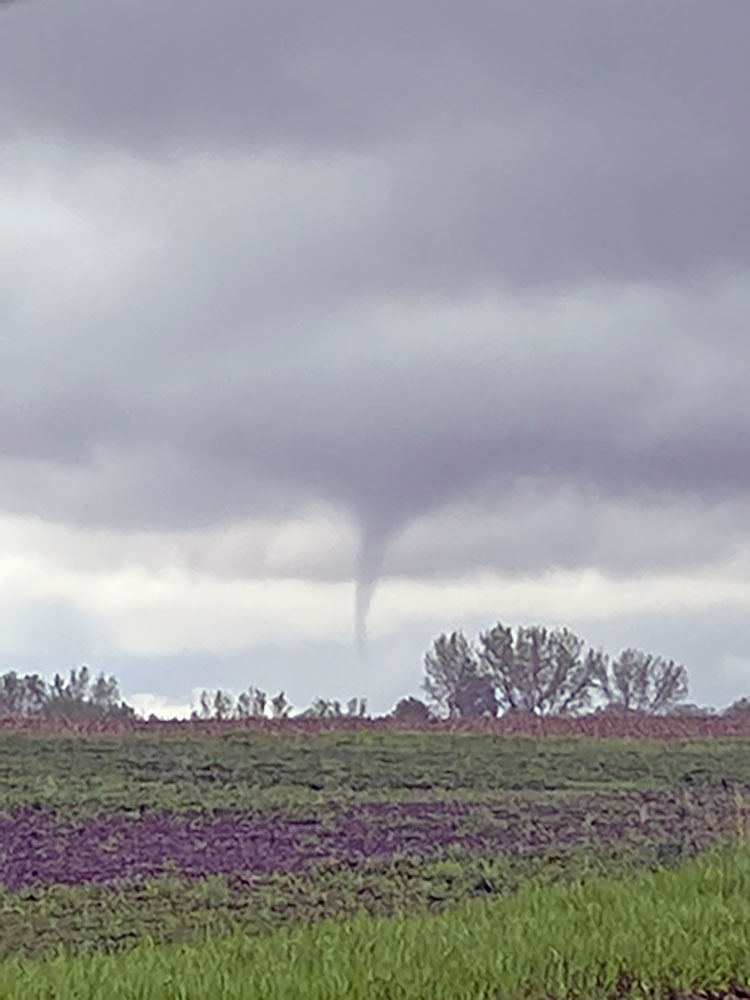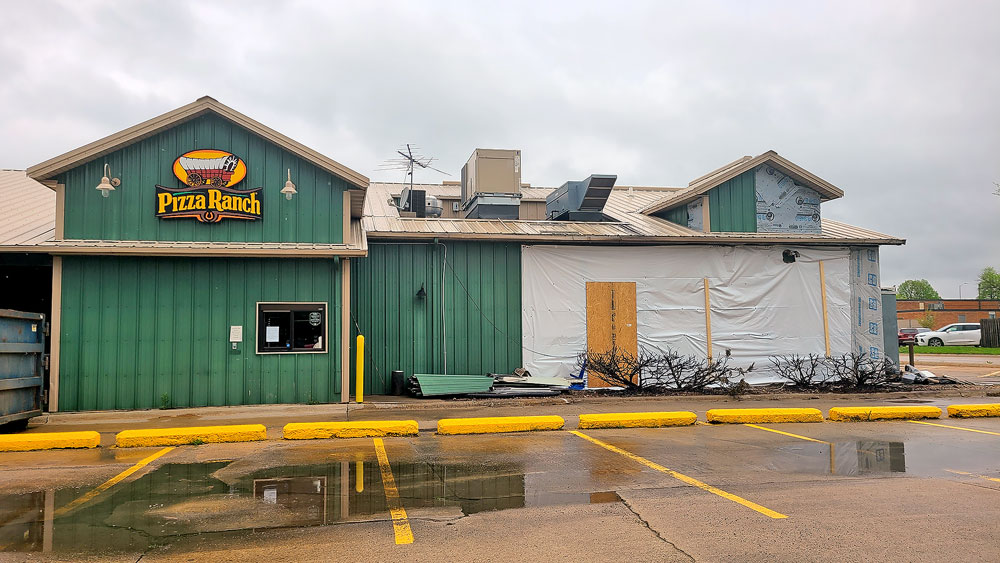Storm dumps rain on Charles City area as drought concerns worry farmers

July marked 10th straight month of below-average precipitation
By Bob Steenson, bsteenson@charlescitypress.com
When this article started being written Sunday afternoon, it was going to be a report on the continuing drought in the area, and how it is affecting the crops.
Then thunderstorms dumped anywhere from a couple of inches to almost 9 inches of rain Sunday evening and Monday morning in the area. There were unconfirmed reports from personal rain gauges of more than 10 inches in some areas.
The official National Weather Service rainfall amount for Charles City lists 4.38 inches for the 24-hour period ending at 6 a.m. Monday, Aug. 9.
All by itself it likely didn’t end the drought, and in some cases may have come too late to save yields from being impacted. But talk about going from one extreme to the other.
An area from south of Charles City over to just north of Nashua received more than 8½ inches of rain in the 48 hours ending Monday morning, according to iweather.net. A wide swath from north of that area to Charles City received from 6 to 7 inches, and Charles City received anywhere from four or more inches in some parts of town to 1½ inches in the northern part of the city limits.
The rainfall did not fall consistently throughout the Floyd County area, however. Some areas in the western part of the county received less than an inch of rain, but most of the county received at least a couple of inches.
Charles City was under a flash flood watch Sunday evening and Monday morning, and there were reports of some intersections flooding in the city, but City Administrator Steve Diers said he hadn’t heard reports of significant damage.
What rain fell was quickly absorbed by the dry, thirsty soil.
Linda Tjaden, a Floyd County supervisor who farms northeast of Charles City, said her rain gauge showed about 3 inches fell, but there weren’t any puddles anywhere.
“It all soaked in,” she said.
In June and July, Charles City had received a little over 6 inches of rain, compared to the normal average amount of almost 10½ inches.
This month, however, the recent rain has already pushed Charles City’s August rain total past the normal 3.92 inches.
Concern was growing about area corn and soybean fields as the drought that has plagued much of Iowa this summer just didn’t seem to want to go away.
As of the latest report issued last Thursday, the southern half of Floyd County was classified as extreme drought, and most of the rest of the county was classified severe drought.
“We’re seeing the bottom leaves and canopy on corn plants starting to fire,” ISU Extension Agronomist Terry Basol said last week. “We’re at the two stages where we’re starting to see kernel abortion, and the issue is that you just can’t get that back.
“I know I said it [last month], but I’ll say it again. In a lot of fields — especially in Black Hawk, Butler, Bremer, the lower third of Floyd, a good chunk of Chickasaw — we’ve lost the top-end yields. We just have some places that are bone dry right now.”
Basol is based at the Northeast Iowa Demonstration Farm, which is located a couple miles southwest of Nashua, and from April 1 through last Friday, the farm had received 8.06 inches of rain. The 30-year normal average for those four months, though, is 19.54 inches of rain.
“When you look at those numbers — basically 8 inches and 20 inches — and you realize we’re at 40 percent of normal rainfall, the fact that our fields look as good as they do now is almost a miracle,” Basol said.
“Look, unless something dramatically changes, some guys are going to have a tough year, but I will say that for the conditions we’ve had to face, we’re doing as OK as we can,” he said.
— Bob Fenske, editor of the New Hampton Tribune and the Nashua Reporter, contributed to this report.









Social Share